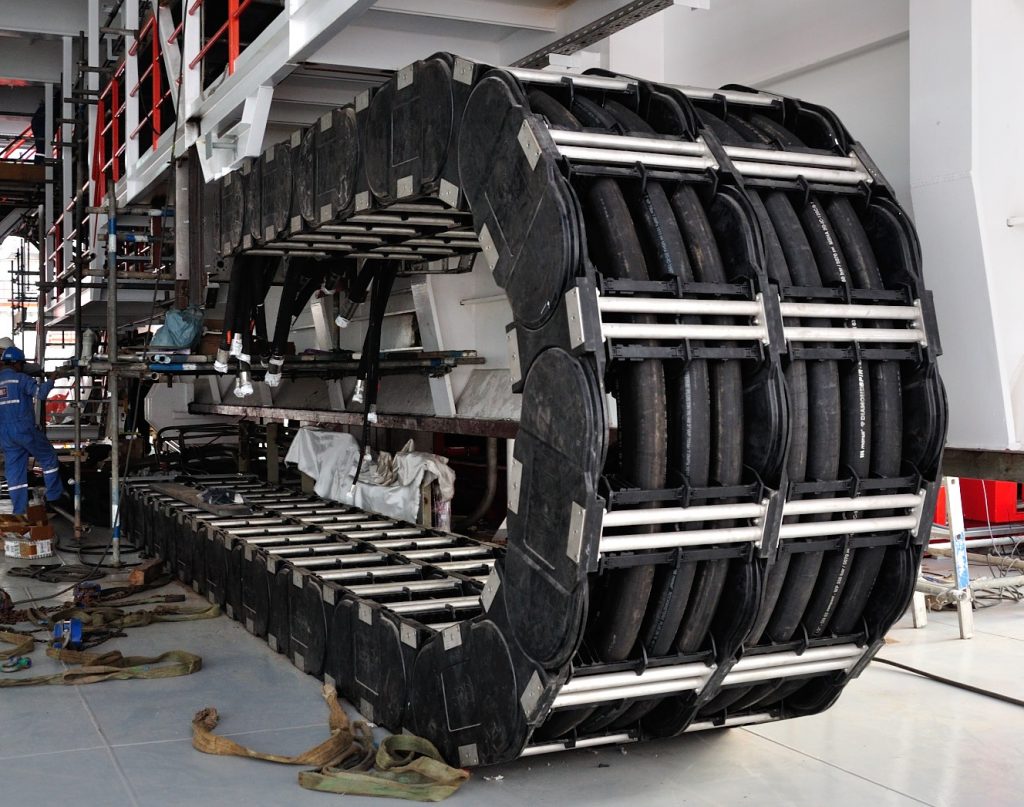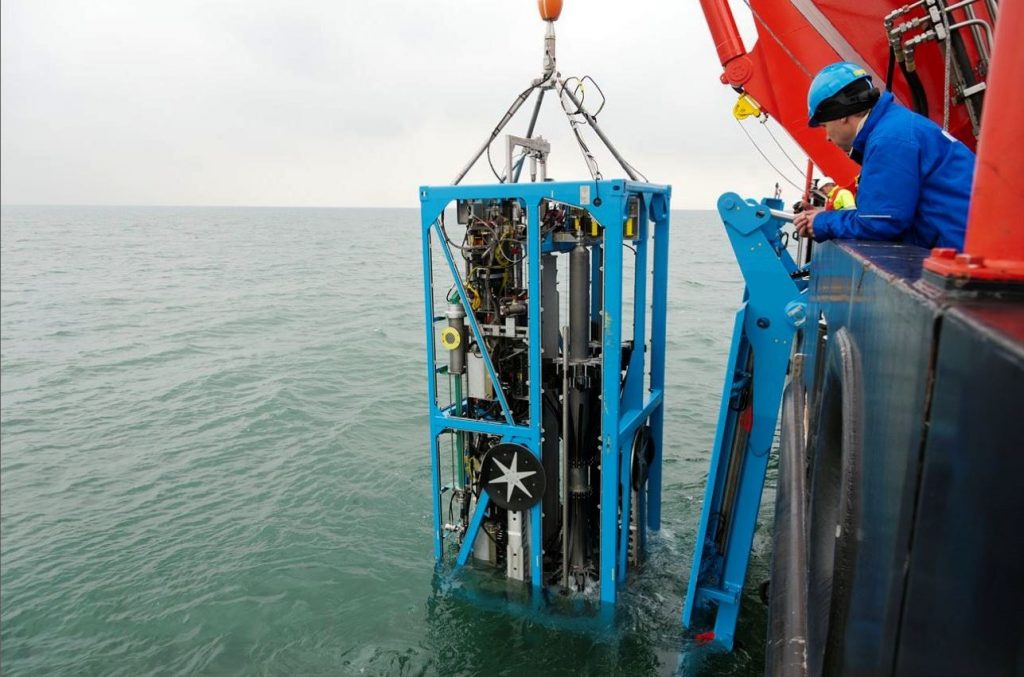Plastic or steel – are you spoilt for choice?
Tim Schneebeck | 27. March 2020
Especially in oil & gas and offshore applications, steel energy chains are often used. But this is not necessary – a look at the advantages of plastic energy chains makes perfect sense.
We are on a drilling platform in the North Sea. Rough weather, heavy machinery and a crew that is not squeamish with the equipment. Energy chains made of steel are used here very frequently. The main reason for this is that high loads or additional loads must be moved in the energy chains for the equipment (such as catwalk or pipe handler). Here, steel energy chains fully exploit their advantages of a high additional load and unsupported length.

But here, too, it is worth looking at a plastic solution. Because energy chains made of high-performance polymers are becoming technically better, more robust and more mature. High payloads can be compensated for, for example, by middle bands, a kind of additional chain link. A gliding system is also suitable for very heavy cable packages, which means that the upper run moves on the lower run – an advantage that requires no additional modification of the energy chain in plastic energy chains. This is because steel energy chains basically consist of more individual parts than the plastic variant. This makes installation and repair much more time consuming

And what do wind, rain and lots of dirt do with the energy chains on offshore drilling rigs? It is clear that under these circumstances an energy chain made of steel must be made of an alloyed steel to avoid corrosion. Therefore, stainless steel is used in most cases. An advantage that a plastic brings along by itself – it does not corrode. The standard material can therefore be used.
A look at the weight of both energy chains also shows clear differences. Compared to steel, the plastic solution is only about half the weight (comparison of E4.112 with a comparable steel energy chain size).
All the advantages at a glance:
Steel energy chain:
- High load capacity and fill weights for unsupported applications
- Many individual parts and a high weight
- Corrosion-free when made from stainless steel
Plastic energy chain:
- Large additional loads can be easily handled due to middle bands
- Gliding applications without modification of the energy chain
- Standard materials are 100% corrosion resistant
- Modular with few individual parts
- Lightweight
- More cost-effective compared to steel
Further information about plastic energy chains for the offshore and oil & gas industry: http://www.igus.eu/offshore, https://www.igus.eu/info/oil-gas-industry?L=en

